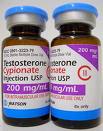Gynecomastia Causes Of Gynecomastia
Gynecomastia Causes Of Gynecomastia
Causes of Gynecomastia
Until recently, gynecomastia lived in the shadows of the plastic surgery community. In fact, many men living with gynecomastia didn’t even know it had a name or that there was predictable treatment available. The following outlines the most current understanding and the most cutting edge treatment options available for gynecomastia.
- Overview of Gynecomastia
- Causes of Gynecomastia
- Ideal male chest
- Joseph T Cruise, MD’s Gynecomastia Philosophy
- 7 Types of Gynecomastia
- 1-Puffy nipple. Breast tissue outside of areola
- 2-Chest angle less than 45 °
- 3-Chest angle 45-60° Mild breast sag
- 4-Chest angle 60-90° Moderate breast sag
- 5-Chest angle greater than 90° Significant sag
- 6-Top of areola is above chest fold. Severe sag
- 7-Top of areola is below chest fold. Extreme sag
- Are You a Good Candidate?
- Benefits of Male Breast Reduction
- Components of Gynecomastia
- Classic Gynecomastia
- Puffy Nipples
- Fatty Gyecomastia
- Saggy Gynecomastia
- Breast Roll
- Prior to Male Breast Reduction
- Male Breast Reduction Anesthesia
- After the Male Breast Reduction
- Recovery from Male Breast Reduction
- Possible Complications
- Gynecomastia Cost and Financing
- Gynecomastia Words to Know
- Gynecomastia Before and After Pictures
It has only been over the past few years that a small number of plastic surgeons have dedicated a large portion of their practice to the treatment of this condition. Plastic surgeons have conclusively categorized the various types of gynecomastia and have effectively developed treatment plans to address each one. Joseph T Cruise, MD is at the forefront of this movement. Read along, and we will outline the different types and describe what is necessary to treat each one.
Causes of Gynecomastia
Causes of male breast enlargement range from hormonal changes and taking certain medications, to genetic predisposition. In fact, it is not uncommon for healthy teenage boys, usually around 12-14 years of age, to have the problem. However, at this age, the cause is usually hormonal and goes away after puberty.
There are also many situations in which there is no defined cause for gynecomastia. It is simply the way the person developed. However, even in this case, the problem is treatable.
The most common defined causes of gynecomastia treated by Joseph T Cruise, MD include:
- Excess body fat. Increased body fat in men often concentrates in the breast tissue. In addition, excess body fat causes estrogen, a female hormone, to increase in the blood which, in turn, causes breast tissue to grow.
-
Anabolic steroid use. Gynecomastia is a common side effect of anabolic steroid use. Men naturally produce small amounts of estrogen and when anabolic steroids are used estrogen levels can rise causing male breast enlargement. Read more about steroid use and gynecomastia here.

- Medications such as Avadart, Propecia,and many pro-hormones taken to increase muscle mass or for therapy treatments are also known to cause hormonal imbalances resulting in increased breast enlargement.
- Naturally elevated levels of estrogen or a high ratio of estrogen to testosterone.
Note: Gynecomastia caused by excess body fat is technically defined as pseudo-gynecomastia. In fact, true gynecomastia is defined by having an excess of glandular breast tissue.


